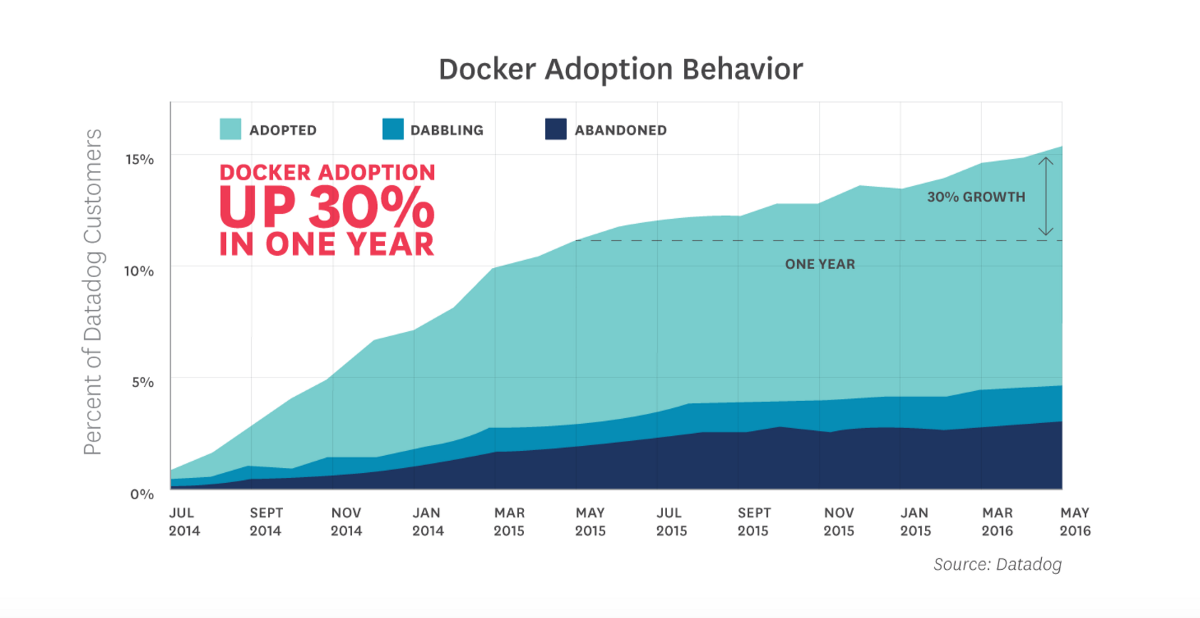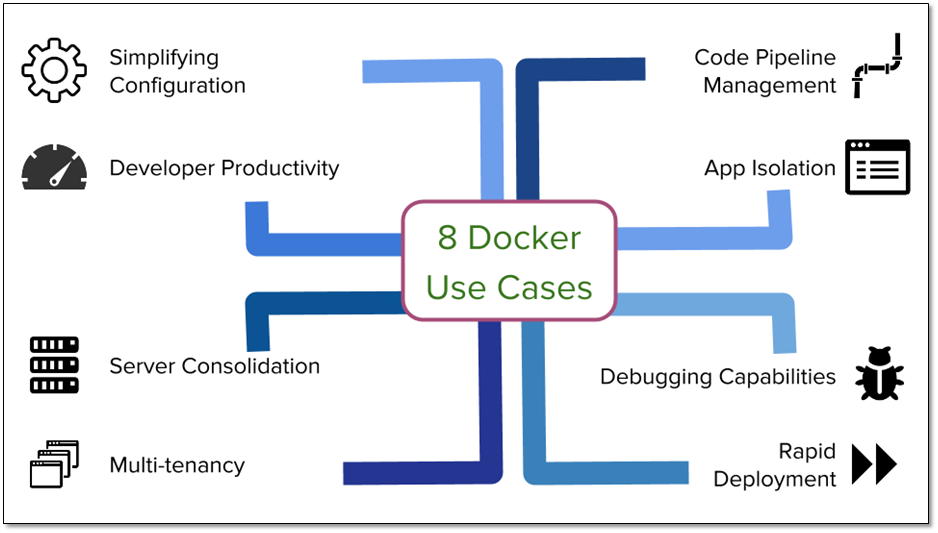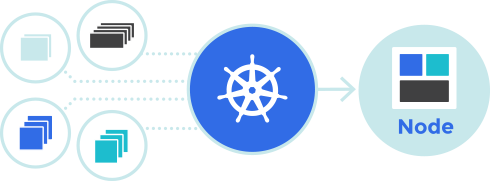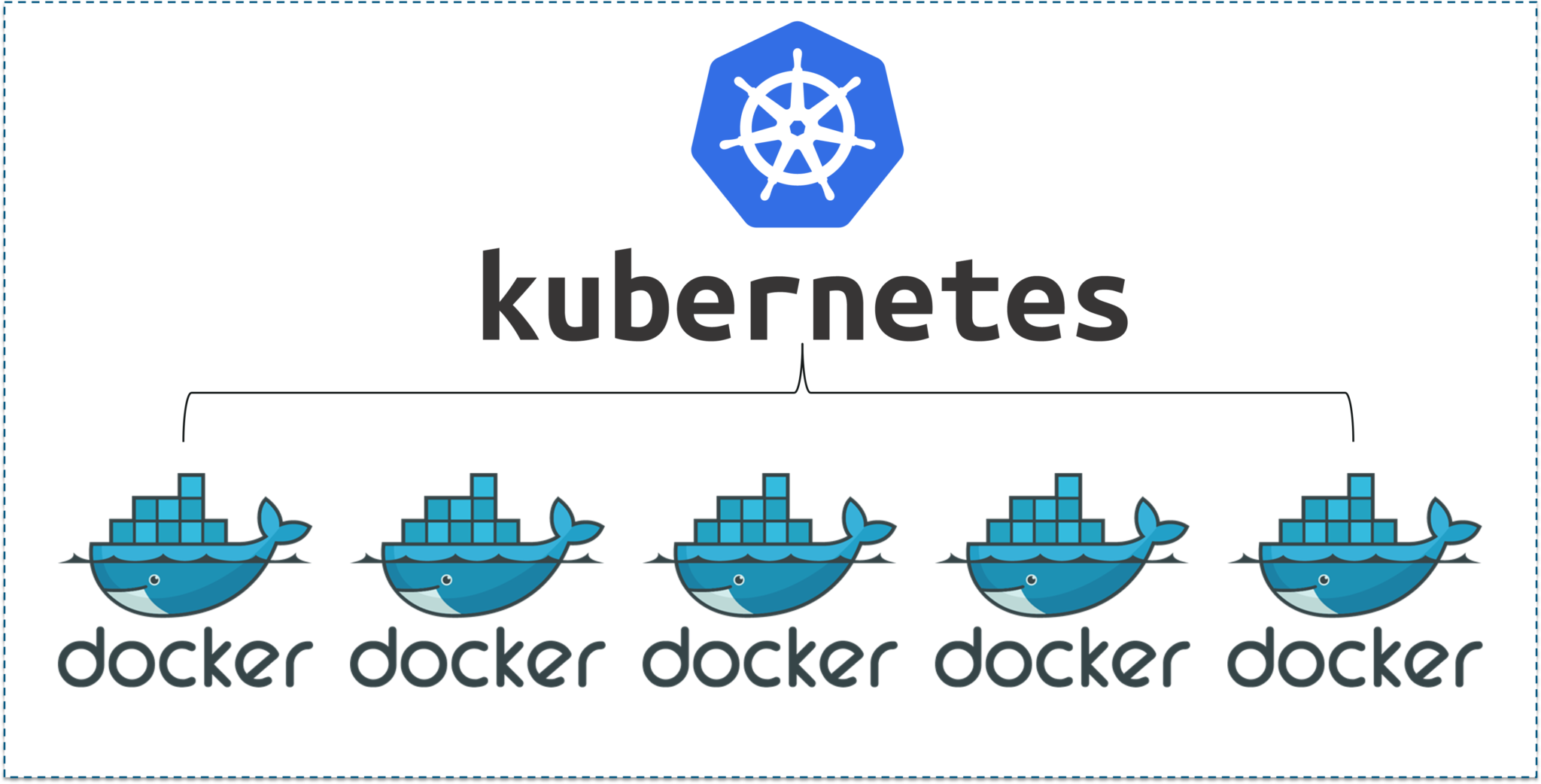Will you be the Kubernetes to My Docker?
All about Kubernetes and Docker for a normal Man.
Let’s get straight to this!
What is container?
Containers are a form of operating system virtualization. A single container might be used to run anything from a small microservice or software process to a larger application. Inside a container are all the necessary executables, binary code, libraries, and configuration files. Compared to server or machine virtualization approaches, however, containers do not contain operating system images. This makes them more lightweight and portable, with significantly less overhead. In larger application deployments, multiple containers may be deployed as one or more container clusters. Such clusters might be managed by a container orchestrator such as Kubernetes.
The logo explains it all, isn’t it? Whole docker can be explained just by observing the logo
Benefits of Containers
Containers are a streamlined way to build, test, deploy, and redeploy applications on multiple environments from a developer’s local laptop to an on-premises data center and even the cloud. Benefits of containers include:

Less overhead. Containers require less system resources than traditional or hardware virtual machine environments because they don’t include operating system images.
Increased portability. Applications running in containers can be deployed easily to multiple different operating systems and hardware platforms.
More consistent operation. DevOps teams know applications in containers will run the same, regardless of where they are deployed.
Greater efficiency. Containers allow applications to be more rapidly deployed, patched, or scaled.
Better application development. Containers support agile and DevOps efforts to accelerate development, test, and production cycles.
Container Use Cases
Common ways organizations use containers include:
“Lift and shift” existing applications into modern cloud architectures. Some organizations use containers to migrate existing applications into more modern environments. While this practice delivers some of the basic benefits of operating system virtualization, it does not offer the full benefits of a modular, container-based application architecture.
Refactor existing applications for containers. Although refactoring is much more intensive than lift-and-shift migration, it enables the full benefits of a container environment.

Develop new container-native applications. Much like refactoring, this approach unlocks the full benefits of containers.
Provide better support for microservices architectures. Distributed applications and microservices can be more easily isolated, deployed, and scaled using individual container building blocks.
Provide DevOps support for continuous integration and deployment (CI/CD). Container technology supports streamlined build, test, and deployment from the same container images.
Provide easier deployment of repetitive jobs and tasks. Containers are being deployed to support one or more similar processes, which often run in the background, such as ETL functions or batch jobs.
What the heck is Kubernetes?
 Definition by Kubernetes.io
Definition by Kubernetes.io
Kubernetes (K8s) is an open-source system for automating deployment, scaling, and management of containerized applications.

Planet Scale
Designed on the same principles that allows Google to run billions of containers a week, Kubernetes can scale without increasing your ops team.

Never Outgrow
Whether testing locally or running a global enterprise, Kubernetes flexibility grows with you to deliver your applications consistently and easily no matter how complex your need is.

Run Anywhere
Kubernetes is open source giving you the freedom to take advantage of on-premises, hybrid, or public cloud infrastructure, letting you effortlessly move workloads to where it matters to you.
How Do Docker and Kubernetes Relate to Containers?

Users involved in container environments are likely to hear about two popular tools and platforms used to build and manage containers. These are Docker and Kubernetes.
Docker is a popular runtime environment used to create and build software inside containers. It uses Docker images (copy-on-write snapshots) to deploy containerized applications or software in multiple environments, from development to test and production. Docker was built on open standards and functions inside most common operating environments, including Linux, Microsoft Windows, and other on-premises or cloud-based infrastructures.
Containerized applications can get complicated, however. When in production, many might require hundreds to thousands of separate containers in production. This is where container runtime environments such as Docker benefit from the use of other tools to orchestrate or manage all the containers in operation.
One of the most popular tools for this purpose is Kubernetes, a container orchestrator that recognizes multiple container runtime environments, including Docker.
Kubernetes orchestrates the operation of multiple containers in harmony together. It manages areas like the use of underlying infrastructure resources for containerized applications such as the amount of compute, network, and storage resources required. Orchestration tools like Kubernetes make it easier to automate and scale container-based workloads for live production environments.
Read the official documentation here for more: https://kubernetes.io/docs/home/
Stay curious!